Superphylum Heterokonta Family HormosiraceaeFritsch Higher classification Hormosira | Scientific name Hormosira banksii Rank Species | |
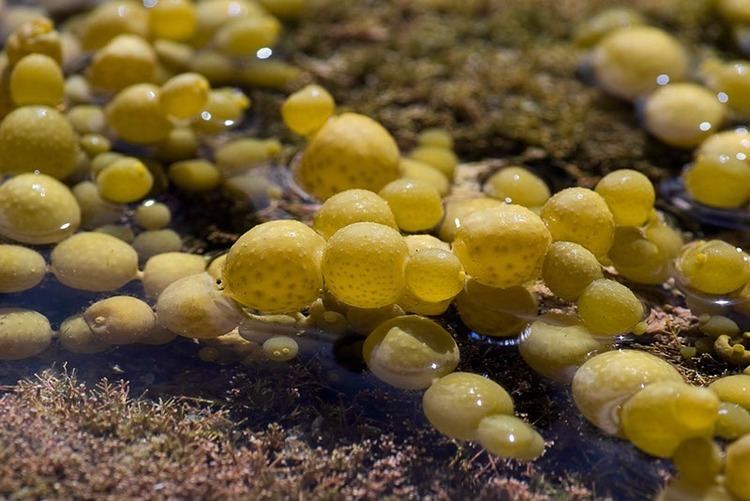 | ||
Similar Fucales, Cystophora, Durvillaea, Phyllospora comosa, Notheia anomala | ||
Neptune s necklace gourmet seaweed hormosira banksii
Hormosira banksii, also known as Neptune's necklace, Neptune's pearls, sea grapes, or bubbleweed) is a species of seaweed (brown algae, Fucales) native to Australia and New Zealand. It is abundant on low-energy rocky reefs at midtide levels, where it outcompetes other algal species due to its high tolerance to desiccation. This is because it has a slimy layer that conserves moisture. The thallus of this species is made up of strings of olive-brown, spherical, gas-filled pneumatocysts, which taper towards a small holdfast that is easily dislodged from the substrate. The spheres rise to the surface of the water during high tide, obtaining more sunlight and moving with the flow of the current.
Contents
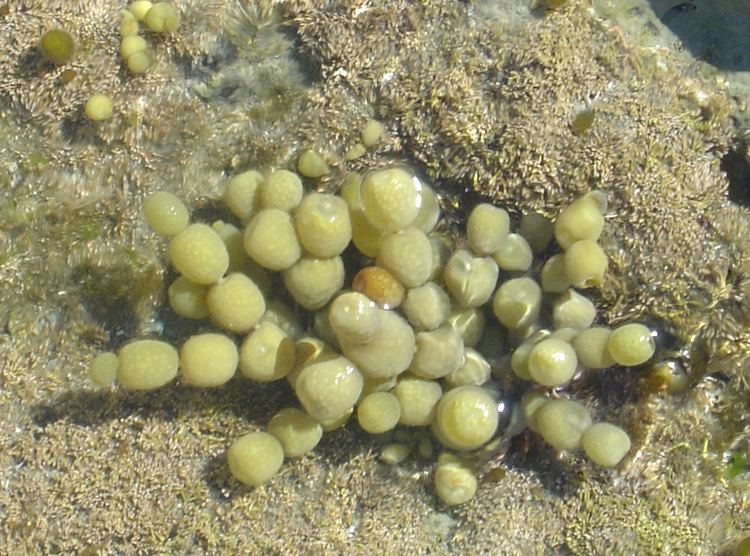
Reproduction
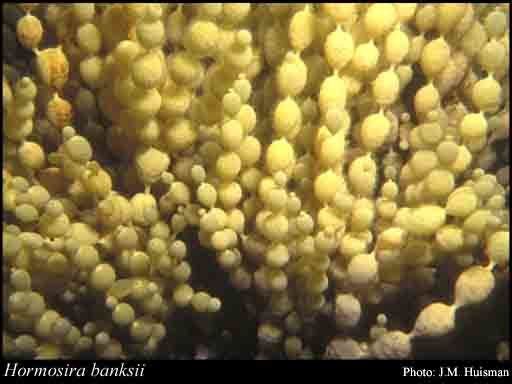
This seaweed can reproduce asexually from broken fragments. The attached form also reproduces sexually, and is monoecious. The sex organs (conceptacles) are on the surface of the beads, and are visible to the naked eye as rough-looking dimples.
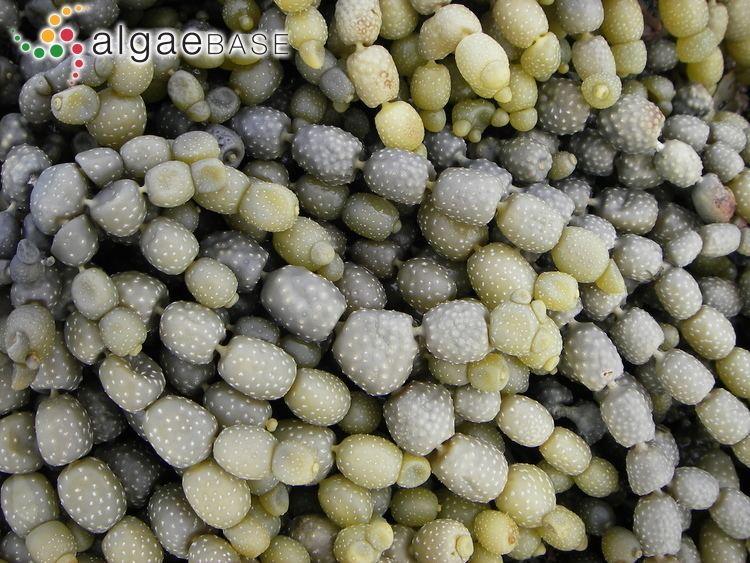
Hormosira produces eggs throughout the year, but its peak reproduction is often confined to July–October (at least in northern New Zealand) when the sea temperature is around 14 °C, as the viability of the eggs can be low in high sea temperatures such as 17–22 °C. At high tide, the eggs are released directly into the surrounding water, and when fertilised, they sink to the substrate to develop for several days before becoming attached. All individuals release at the same time, maximising fertilisation.
Ecology
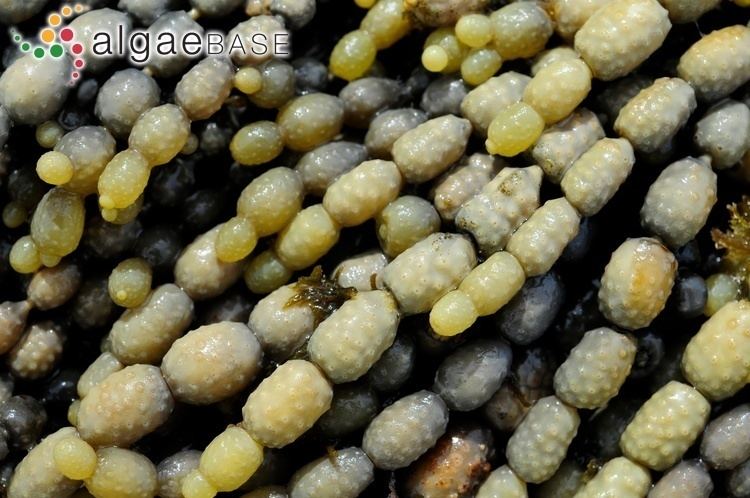
This seaweed is mostly found in the littoral zone or in rock pools, where it receives plenty of light and enough seawater to avoid desiccation. Homosira often lives in large patches, minimising moisture loss when the tide is low.
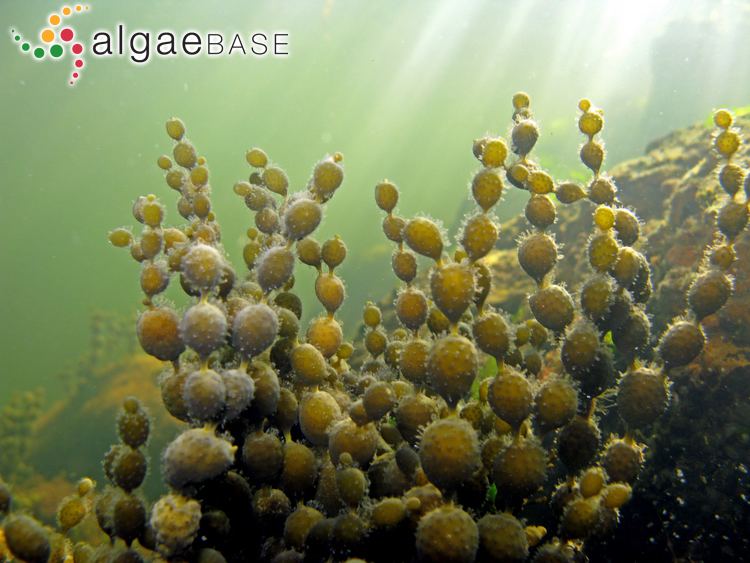
Hormosira is a food source for sea urchins, many small crustaceans, and some juvenile fish. Young crustaceans and molluscs often rely on the dense canopies of this species for niche space, protection from predators, and retention of moisture under low-tide conditions. It also provides a substrate for sessile organisms to attach to, including sea urchins and a wide range of facultative and obligate algal epiphytes, as the intertidal environment is a greatly competitive habitat with space being one of the primary limiting factors.
